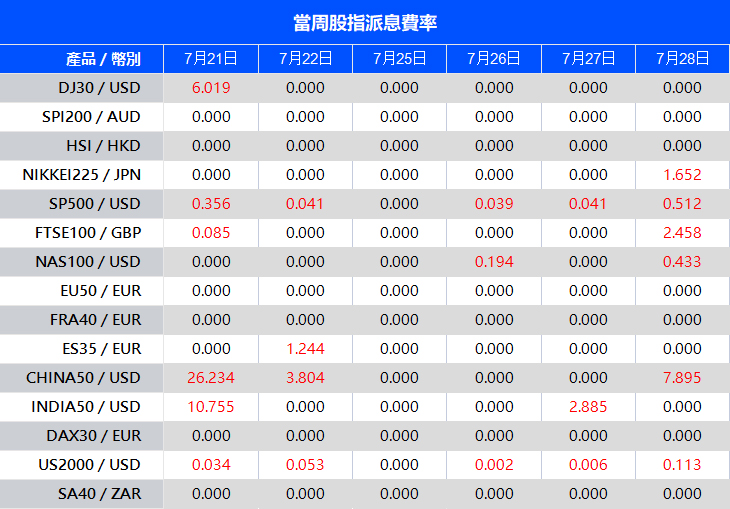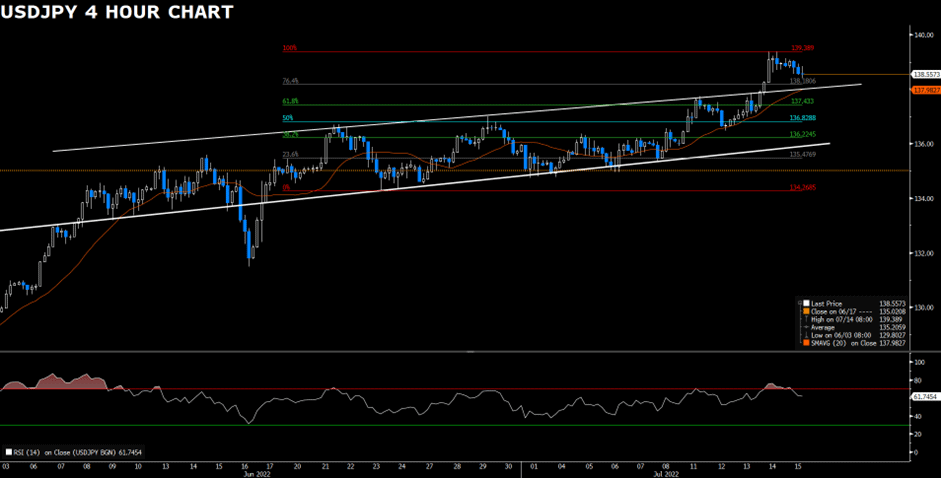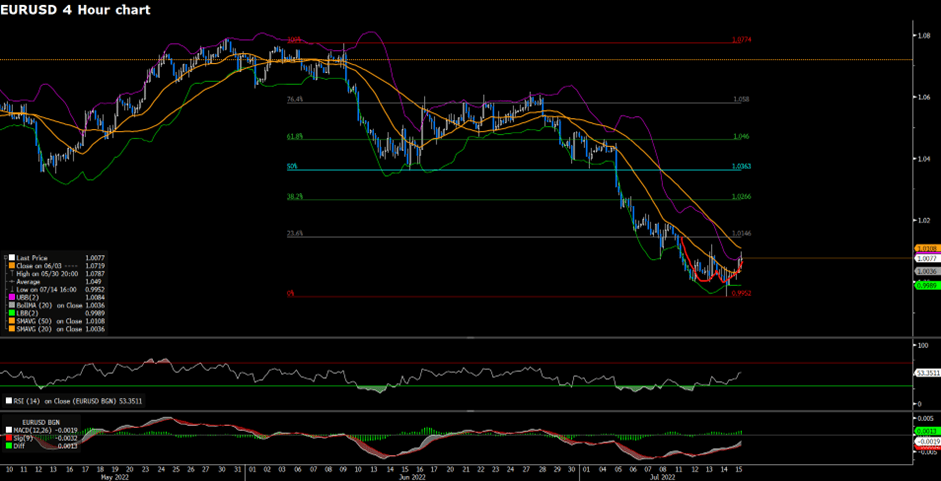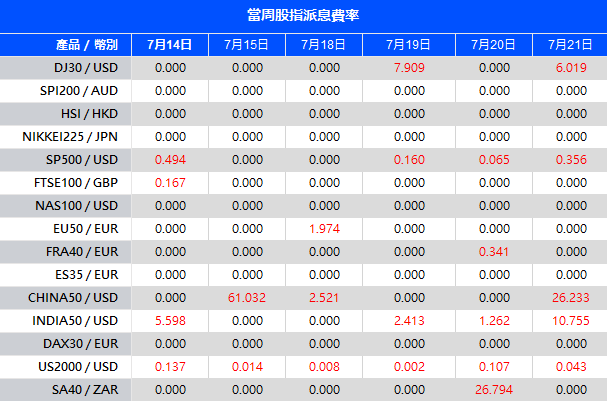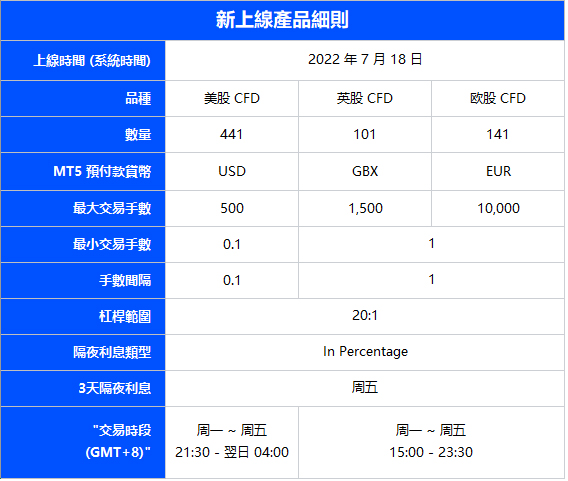Due to dismal results from social-media companies and weak economic data, US stocks dropped on Friday, failing to maintain the upward momentum and ending a three-day rise. Snap Inc.’s disappointing performance and Twitter Inc.’s weaker-than-anticipated sales figure have heightened concerns about online ad spending, which is also one of the mounting indications that technology businesses are preparing for a recession.
The Fed meeting this week will be the primary focus for investors, as market sentiment remains fragile in the face of higher inflation, rapidly rising interest rates, and fears of a recession, despite market participants’ expectations that the Fed will take a more measured approach to tighten monetary policy. In the Eurozone, economic activity in Germany’s private sector decreased in early July, according to statistics released on Friday, while the eurozone’s manufacturing PMI went below 50 for the first time in more than two years. The economy of the eurozone is likely to fall in the third quarter, as corporate activity has begun to decline.

Both the S&P 500 and Dow Jones Industrial Average sank on Friday, with the S&P 500 falling for the first time in four days due to recession fears and disappointing tech company reports. The S&P 500 decreased by 0.9% on a daily basis, while the Dow Jones Industrial Average decreased by 0.4%. Eight of eleven sectors remained in negative territory, with the Communication Services and Information Technology sectors losing 4.34 % and 1.38 %, respectively, as the poorest performers. The Nasdaq 100 dropped the most on Friday, falling 1.8%, while the MSCI World index dropped 0.5%.

Main Pairs Movement
The US dollar was little changed on Friday, as it faced additional selling pressure and failed to rise above the 107.3 mark in response to data indicating a decline in early July private sector business activity. After the release of the German Manufacturing PMI, the DXY index inched upward and reached a daily high, but then began to experience fresh selling to extend its daily losses below the 106.2 mark. In July, the US S&P Services PMI fell to 47, which was well below the market’s forecast of 52.6 and indicated a worrying downturn in the economy.
The GBP/USD currency rate increased by 0.16 % on Friday after renewed dollar weakness. In terms of economic data, UK Retail Sales decreased by 5.8 % year-over-year in June, but better-than-expected UK PMIs have relieved some pressure on the Bank of England (BoE). At the start of the European session, the GBP/USD pair plummeted to a daily low below the 1.193 level before regaining upward momentum to recoup all of its daily losses. During the initial half of the day, EUR/USD was surrounded by bearish momentum and weighed down by dismal German PMI data. The pair declined by over 0.15 % for the day.
Gold climbed 0.55 % on the day after reaching a daily high above $1738 in the early US trading session, as the precious metal attracted new buyers in response to a strong decline in US government yields. Meanwhile, WTI oil maintained its downward momentum and fell to around $95 per barrel on Friday, as the reopening of the Nord Stream 1 gas pipeline weighed on oil prices.
Technical Analysis
XAUUSD(4-Hour Chart)

Gold surpasses $1,725 at the time of this Friday’s writing. As a result of the poor PMI data, the benchmark 10-year US Treasury bond yield falls by more than 4% every day, reducing the demand for the US dollar. After reaching the crucial support level of $1,680, gold performs a good technical recovery. Due to the fact that the RSI has not yet reached overbought territory and the MACD is continuing to provide support, gold may be able to overcome the $1,732 resistance level. The acceptance of the midpoint of the Bollinger band would protect the bulls of gold.
Resistance: 1732.58, 1756.40, 1779.70
Support: 1680.99
USDJPY (4-Hour Chart)

Following the release of US economic statistics, USDJPY was able to fall below 136,000 during the American session. The USDJPY reached its lowest level in two weeks. The intraday bias is now bearish from a technical standpoint, as the pair has breached the bullish channel. The pair is about to produce a four-hour closing price below the channel and the 136.28 resistance level. Immediate support is located at 135.67, followed by the zone at 134.52. To erase the negative tone, the U.S. dollar must climb back above 136.28.
Resistance: 136.28, 136.95, 137.53
Support: 135.67, 134.52
EURUSD (4-Hour Chart)

After US statistics, the EURUSD has extended its rebound during the American trading day. From a technical standpoint, EURUSD recovers after reaching the lower Bollinger Band band and the 20 Simple Moving Average. The bulls had pushed EURUSD over 1.0205 resistance at the time of writing, indicating a positive change on the four-hour chart. If EURUSD is able to sustain its upward momentum into the next barrier around 1.0284, the probable double-bottom formation will indicate a bullish bias for the pair. Currently, the RSI indicator is trading within the positive region, which supports the upside. Contrariwise, an intraday closing below 1.0205 could pave the way for a decline towards parity. Next week’s FOMC meeting will likely influence future price movements.
Resistance: 1.0284, 1.0362, 1.0459
Support: 1.0205, 1.0109
Economic Data
| Currency | Data | Time (GMT + 8) | Forecast |
| EUR | German Ifo Business Climate Index (Jul) | 16:00 | 90.2 |





